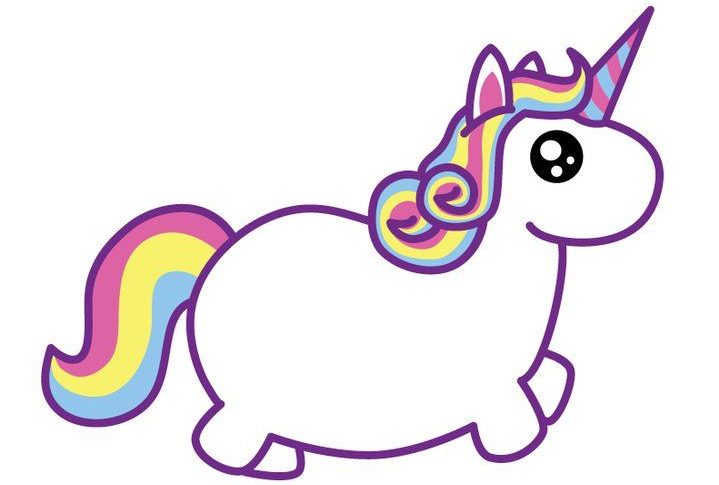Giving something a name, and even being very clear about its definition, doesn’t mean that it necessarily exists in reality. Most people would agree on how to identify a unicorn, for example, even though they are mythical rather than real creatures. The problem is that the existence of the label can give the misleading impression of the existence of the ‘thing’.
– British Psychological Society1
Validity and Reliability
There are no objective laboratory tests in psychiatry.2 3 4 Rather than being derived from medical discoveries, psychiatric ‘disorders’ are ‘voted into existence by committees, 5 informed by theories which lack empirical support’ (emphasis added).6
Reliability, in psychiatry, is a red herring. Even if diagnosticians could agree one hundred percent of the time, regarding which diagnosis to give a particular person, this would not change the fact that such diagnoses are not valid medical illnesses. Even so, data suggest that psychiatric ‘disorders’ cannot be diagnosed reliably.7 Based on DSM-5 field trials, reported kappa scores8 for ‘schizophrenia’, ‘depression’ and ‘anxiety disorder’, were 0.46, 0.28, and 0.20, respectively.9
Kirk and colleagues concisely explicated the ineradicable problem with psychiatric diagnoses in their book, Mad Science:
DSM is like a tax code masquerading as a scientific classification system. Contending psychiatric factions and opinion leaders argue over specific criteria for substance, mood, anxiety, or personality disorders, as if through debate or field trials they can “get it right,” can truly “discover” the true nature of medical disease categories of mental illness. The various criteria being debated are largely meaningless. This is because…the existence of a disease of mental illness has never been established or satisfactorily defined, so on what basis can anyone “scientifically” judge the validity of one classification of an illusion against a slightly revised one?10 (Emphasis in original)
Harms
‘Mental illness is an illness like any other’
Despite attempts to ‘educate’ the public regarding the assumed biological basis of ‘mental illness’, research has repeatedly shown that believing ‘mental illness is an illness like any other’ (a belief promoted by the American Psychiatric Association and SANE Australia), is associated with increased stigma.
Pertaining to the ‘schizophrenia’ diagnosis, a review by Read and colleagues stated that belief in biogenetic explanations is positively correlated with ‘prejudice, fear and desire for distance’.11 More recently, Pescosolido and colleagues compared differences in public causal attributions of ‘schizophrenia,’ ‘depression,’ and alcohol dependence between 1996 and 2006, and found that although endorsement of biogenetic explanations grew, stigma did not decrease. The researchers concluded: ‘An overreliance on the neurobiological causes of mental illness and substance use disorders is at best ineffective and at worst potentially stigmatizing’.12 A review of 33 studies also suggested that biological conceptions of ‘mental illness’ do not reduce stigma and can actually exacerbate stigmatising attitudes.13 Finally, surveys utilising a random and representative sample of South Australians showed that participants whose mental health literacy (i.e. a belief that ‘depression’ is a medical illness) was categorised as ‘poor’ or ‘fair’ were significantly less likely to be diagnosed with ‘depression’.14
Labeling Children
A review of social distance literature reported that labeling can increase desire for distance depending on the type of label used and the labeler’s knowledge of ‘mental disorders’.15 In addition, a study found that diagnostic labels can evoke negative expectations from teachers, parents, and children.16 Teachers also consider the ‘problems’ of children diagnosed with ‘ADHD’ to be more serious, and their behaviour, more disruptive.17 Other research, which presented parents with vignettes describing ‘symptoms,’ and ‘symptoms’ plus a diagnostic label, found that adding the ‘ADHD’ label resulted in a significant (but small) increase in stigma.18 Regardless of whether the diagnosis was known, ‘parents held high levels of stigma’19 towards children described as exhibiting signs of ‘ADHD’ or ‘depression,’ but parents reported greater prejudice toward, and desire for social distance from, children diagnosed with ‘ADHD.’
The Therapeutic Alliance
Empathy is considered ‘a bedrock of the therapeutic alliance’.20 Research has linked empathy with positive clinical outcomes21 22 23 and the strength of an empathetic relationship may be a better predictor of clinical outcome than the type of psychotherapy used.24 Several other researchers have reported positive relationships between a good therapeutic alliance and positive therapy outcomes.25 26 27 These findings are relevant because research has shown that clinicians who have received medical training are significantly less empathetic towards people diagnosed with ‘schizophrenia,’ ‘social phobia,’ ‘depression,’ and ‘obsessive compulsive disorder,’ compared to clinicians without such training. 28 More importantly, biological explanations of ‘mental illness’ yield significantly less empathy in clinicians, regardless of training. Another study found that clinicians framing psychological distress biogenetically were also perceived as significantly less warm by all participants, compared to psychosocially oriented clinicians.29 Biogenetic conceptualisations thus represent a potential threat to the empathic relationship between client and clinician.
In conclusion, although certain individuals feel a sense of relief upon receiving a psychiatric diagnosis, 30 overall, the research suggests that the ‘disease’ model is doing more harm than good.31 32 33 34 35 36 37
Alternatives
In 2013, the British Psychological Society38 published an official statement in which it advocated an end to the use of psychiatric diagnoses and the current ‘disease’ model. Several other critics have championed an end to psychiatric labelling,39 40 41 42 with the BPS recently publishing a report outlining an alternative for understanding emotional distress and behaviours considered unusual, called the Power Threat Meaning Framework.43 Briefly, the PTM framework is a ‘meta-framework based on the core assumption that emotional distress and troubling behaviour are intelligible responses to social and relational adversities and their cultural and ideological meanings.’ 44 Adopting this view may encourage therapists to more readily accept and validate their clients, rather than transmogrifying their unique predicaments and experiences into symptoms of a ‘disease’ in need of a cure.
Validation reflects a genuine acceptance of the client at ‘face value’ and includes an empathic search for justification of the client’s experience in the context of trying circumstances—that they have good reason to feel, think and behave the way they do. (Emphasis added)
– Barry Duncan45
Sami Timimi46 has discussed several therapeutic approaches that focus on cultivating a strong alliance with the client and which also collect periodic feedback in order to gauge client progress. These include the Partners for Change Outcome Management Systems (PCOMS) project, developed in the United States. PCOMS is a non-diagnostic centred model that measures feedback related to outcome and therapeutic alliance. It has proven effective in several randomised control trials, and has been shown to reduce non-attendance and time in therapy in real-life settings.
Footnotes
- British Psychological Society. (2014). Understanding psychosis and schizophrenia. Leicester: Author, p. 22-23.
- Frances, A. (2014). Saving normal: An insider’s revolt against out-of-control psychiatric diagnosis, DSM-5, big pharma and the medicalization of ordinary life. New York: William Morrow.
- British Psychological Society, 2014.
- Kirk, S. A., Gomory, T., & Cohen, D. (2013). Mad science: Psychiatric coercion, diagnosis, and drugs. New Brunswick: Transaction.
- Davies, J. (2016). How voting and consensus created the Diagnostic and Statistical Manual of Mental Disorders (DSM-III). Anthropology & Medicine, 1-15. doi:10.1080/13648470.2016.1226684
- Johnstone, L., Boyle, M., Cromby, J., Dillon, J., Harper, D., Kinderman, P., . . . Read, J. (2018). The Power Threat Meaning Framework: Towards the identification of patterns in emotional distress, unusual experiences and troubled or troubling behaviour, as an alternative to functional psychiatric diagnosis. Leicester: British Psychological Society, p. 26.
- British Psychological Society, 2014.
- Kappa scores represent the degree of agreement among diagnosticians, regarding a specific diagnosis. A kappa score of 1.0 represents complete agreement among diagnosticians; 0.0 represents chance agreement; and -1.0 represents complete disagreement.
- Freedman, R., Lewis, D. A., Michels, R., Pine, D. S., Schultz, S. K., Tamminga, C. A., . . . Yager, J. (2013). The initial field trials of DSM-5: New blooms and old thorns. American Journal of Psychiatry, 170(1), 1-5.
- Kirk, Gomory, & Cohen, 2013, p. 195.
- Read, J., Haslam, N., Sayce, L., & Davies, E. (2006). Prejudice and schizophrenia: A review of the ‘mental illness is an illness like any other’ approach. Acta Psychiatrica Scandinavica, 114, 303-318, p. 303.
- Pescosolido, B. A., Martin, J. K., Long, J. S., Medina, T. R., Phelan, J. C., & Link, B. G. (2010). “A disease like any other”? A decade of change in public reactions to schizophrenia, depression, and alcohol dependence. American Journal of Psychiatry, 167(11), 1321-1330, p. 1327.
- Angermeyer, M. C., Holzinger, A., Carta, M. G., & Schomerus, G. (2011). Biogenetic explanations and public acceptance of mental illness: systematic review of population studies. The British Journal of Psychology, 199, 367-372. doi:10.1192/bjp.bp.110.085563
- Goldney, R. D., Eckert, K. A., Hawthorn, G., & Taylor, A. W. (2010). Changes in the prevalence of major depression in an Australian community sample between 1998 and 2008. The Australian and New Zealand Journal of Psychiatry, 44(10), 901–910. doi:10.3109/00048674.2010.490520
- Jorm, A. F., & Oh, E. (2009). Desire for social distance from people with mental disorders: a review. Australian and New Zealand Journal of Psychiatry, 43, 183-200.
- Ohan, J. L., Visser, T. A., Strain, M. C., & Allen, L. (2011). Teachers’ and education students’ perceptions of and reactions to children with and without the diagnostic label “ADHD”. Journal of School Psychology, 49, 81-105. doi:10.1016/j.jsp.2010.10.001
- Ohan, Visser, Strain, & Allen, 2011.
- Ohan, J. L., Visser, T. A., Moss, R. G., & Allen, N. B. (2013). Parents’ stigmatizing attitudes toward psychiatric labels for ADHD and depression. Psychiatric Services, 64(12), 1270-1273.
- Ohan, Visser, Moss, & Allen, 2013, p. 303.
- Lebowitz, M. S., & Ahn, W. K. (2014). Effects of biological explanations for mental disorders on clinicians’ empathy. Proceedings of the National Academy of Sciences, 111(50), 17786-17790, p. 2.
- Haslam, N. (2007). Humanising medical practice: the role of empathy. MJA, 187(7), 381-382.
- Mercer, S. W., & Reynolds, W. J. (2002). Empathy and quality of care. British Journal of General Practice, 52, S9-S13.
- Howick, J., & Rees, S. (2017). Overthrowing barriers to empathy in healthcare: empathy in the age of the internet. Journal of the Royal Society of Medicine, 0(0), 1-6. doi:10.1177/0141076817714443
- Horvath, A. O., & Symonds, B. D. (1991). Relation between working alliance and outcome in psychotherapy: a meta-analysis. Journal of Counseling Psychology, 38(2), 139-149.
- Martin, D. J., Garske, J. P., & Davis, M. K. (2000). Relation of the therapeutic alliance with outcome and other variables: a meta-analytic review. Journal of Consulting and Clinical Psychology, 68(3), 438-450.
- Krupnick, J. L., Sotsky, S. M., Elkin, I., Watkins, J., & Pilkonis, P. A. (1996). The role of the therapeutic alliance in psychotherapy and pharmacotherapy outcome: findings in the National Institute of Mental Health Treatment of Depression Collaborative Research Program. Journal of Consulting and Clinical Psychology, 64(3), 532-539.
- Duncan, B. (2010). On becoming a better therapist. Psychotherapy in Australia, 16(4), 42-51.
- Lebowitz & Ahn, 2014.
- Lebowitz, S, M., Ahn, W., & Oltman, K. (2015). Sometimes more competent but always less warm: Perceptions of biologically oriented mental-health clinicians. International Journal of Social Psychiatry, 1-9. doi:10.1177/0020764015573086
- British Psychological Society, 2014.
- Davies, J. (2013). Cracked: Why psychiatry is doing more harm than good. London: Icon.
- Frances, 2014.
- Gøtzsche, P. C. (2015). Deadly psychiatry and organised denial. Copenhagen: People’s Press.
- Kinderman, P. (2014). A prescription for psychiatry. Basingstoke, Hampshire: Palgrave Macmillan.
- Kirk, Gomory, & Cohen, 2013.
- Moncrieff, J. (2008). The myth of the chemical cure: A critique of psychiatric drug treatment. Basingstoke: Palgrave Macmillan.
- Whitaker, R. (2010). Anatomy of an epidemic. New York: Crown.
- Division of Clinical Psychology. (2013). Classification of behaviour and experience in relation to functional psychiatric diagnoses: Time for a paradigm shift. Leicester: British Psychological Society. Retrieved from http://www.bps.org.uk/system/files/Public%20files/cat-1325.pdf
- Timimi, S. (2014). No more psychiatric labels: Why formal psychiatric diagnostic systems should be abolished. International Journal of Clinical and Health Psychology, 14(3), 208-215. doi:10.1016/j.ijchp.2014.03.004
- Timimi, S. (2015). Children’s mental health: Time to stop using psychiatric diagnosis. European Journal of Psychotherapy & Counselling, 17(4), 342–358. doi:10.1080/13642537.2015.1094500
- Kinderman, P., Read, J., Moncrieff, J., & Bentall, R. P. (2013). Drop the language of disorder. Evidence-Based Mental Health, 16, 2-3. doi:10.1136/eb-2012-100987
- Kirk, Gomory, & Cohen, 2013.
- Johnstone et al., 2018.
- Johnstone et al., 2018, p. 8.
- Duncan, 2010, p. 47.
- Timimi, 2015.



